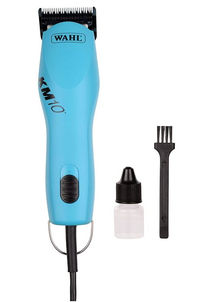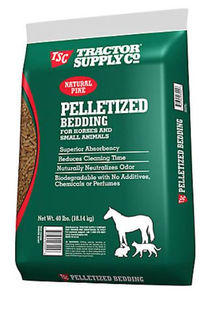We are a participant in the Amazon Services LLC Associates Program, an affiliate advertising program designed to provide a means for us to earn fees by linking to Amazon.com and affiliated sites. As an Amazon Associate I earn from qualifying purchases.
I'll use this page to introduce you to items that I have used and recommend or that have come highly recommended to me by others that I trust. Clicking on any of the pictures below will open up a larger picture with the link on the right side. Click on the link to be taken to the page for ordering information. If you buy an item that I recommend and love it enough to recommend to your friends and family, please direct them here to the link that I have provided. In most cases I earn a small percentage for recommending the product.
If you are going to shave your own Schnauzer, you NEED good quality clippers. Don't fall for the cheap little $40 clipper kit. A good pair of clippers should last the lifetime of your dog and probably longer. Most of these are clippers I have owned or have been highly recommended by breeders/groomers that I know. My Oster A5 lasted me over 20 years and had been dropped on concrete multiple times. The case was cracked and I did a very poor job of maintaining them but they ran like a champ. Yes, the initial purchase may be more than what you would like to spend, but lets take a look at some numbers: If you plan to have your dog groomed every 8 weeks, that is 6 grooms per year at a minimum of $40/groom (probably more). If your dog lives to be 12 you've got over $2800 in grooming throughout your dog's life.
I've also linked some clipper blades. Clippers will typically come standard with a #10 blade included. Most people can get away with just using a #10 blade. If using a #10 on the body, it is usually recommended to go WITH the lay of the hair to leave the hair just a tad bit longer. I prefer a #30 blade for the ears and paw pads. If your pup has a thinner coat, you might want to use a #7F blade for the body and the #10 for the ears but I would still use a #30 for the paw pads. If you want them to be neat but fluffy, a #4 would work well for the body. Clipper blades should last quite a while if you are only maintaining a couple of dogs and the blades are interchangeable between the brands so an Oster blade will work with a Wahl or Andis clipper and vice versa. I suspect you would only need to replace clipper blades every couple years, especially if you make sure to bath your dog before clipping so that there is no dirt in the coat to dull the clipper blades. If you'd like to use a clipper blade instead of scissors on the legs to keep the furnishings manageable, I'd recommend a #3.
Along with a good set of clippers, your grooming sessions will be SO much easier if you have a grooming table with an arm and loop. It will be easier on your back and can help hold your pup still. If you don't want to invest in a table, you can put a towel or carpet square on top of your clothes dryer but need to be very careful that they don't jump or fall off.
Other products that can make your life easier.
Crates and exercise pens are the #1 tools you will need for house training your new addition. It will also help to keep your little one out of trouble and safe from injury as it is impossible to watch your pup 24 hours a day. There are different styles on the market so you need to decide if you want an all wire or plastic style. The soft sided crates can work well for an older dog that happily crates, but is not recommended for puppies as they can easily be destroyed by a determined pup. A pup could ingest the netting or parts of the zipper which could cause a bowel obstruction. If getting the metal crate, it comes with a divider so that you can adjust the size as your pup grows, it also has a door on both the short side and the long side to make it easier to find the perfect spot for it to fit. If getting a plastic crate, you usually can't divide it unless you come up with something indestructible that you can shove into the back of the crate to reduce the size and then remove it after your pup is bigger. So you may have to get the smaller size that is suitable for your pup and then replace it with a larger size as your pup grows. The key to crate training is that it has to be small enough that your pup will not want to potty in one side and sleep in the other. Smaller is better unless you are continuing on with the potty box training that has been started here, then a larger crate that would fit a potty box would be suitable. Otherwise an exercise pen that you can attach to your crate or sit your crate in the middle of would be helpful to give them access to their crate and a potty box. All of my adult dogs are in the blue colored 24" crate shown below. Most times, my puppies can go straight into that crate without issue but it does come with a divider if you need to start them smaller. I've also shown the two different style of potty boxes I use as well as the litter I use in them. Alfalfa pellets are safe if ingested and they smell like grass so puppies usually make the transition to house training very well. My favorite dog door is also shown. They are super expensive but practically indestructible. I've had mine for 5+ years and have not needed to replace anything except the weather stripping on the edges of a couple doors and that is cheap. If you are traveling with your pup, it needs to be contained! It is not safe for you or them to be lose in the vehicle. These crates shown and harnesses/booster seats are good to contain them for distracted driving but many will not protect your pet in an accident. https://www.centerforpetsafety.org/


























































